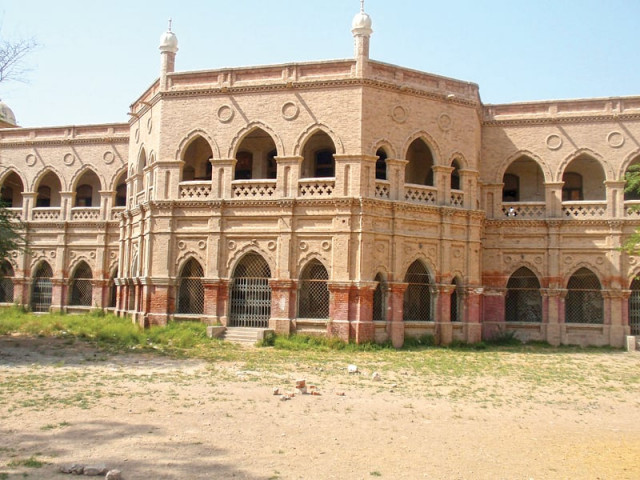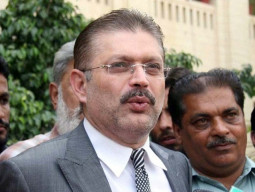
However, it was disheartening to see several of the buildings and an old bazaar, which were full of stories from the past, in ruins as Pakistan Peoples Party MNA Aftab Shaban Mirani introduced the city he was born in.
"Shikarpur was built by the Daudpotas; the ruling family of Bahawalpur, in 1617 AD," he said. "The Afghan invasion in the 18th century was bad for trade in Multan and gave it quite a setback. The merchants moved to Shikarpur eventually and the city just thrived."

Mirani was talking about his hometown at the Watch Day Programme held at Government High School No 2 in the historical town last week. This was part of a two-day event organised by the NED University's department of architecture and planning in collaboration with the Endowment Fund Trust.
While discussing the end of the 19th and first quarter of the 20th century, the MNA said that the city had an impressive relationship with its residents and was brimming with commercial activity and business. He added that after Partition in 1947, several of the city's Hindu families left and the trading network spread across borders.
According to Mirani, one way to save the city would be to establish the Shikarpur Building Control Authority - this, he said, would look over all construction and renovation in the city. He added that it would also be able to preserve the city's remaining heritage sites. The MNA suggested that the endowment fund should set up a Shikarpur Historical Society and Shikarpur Watch Group to scout through the city and ensure that woodwork and other furnishings or artifacts of buildings before 1950 had not been dismantled, broken, stolen or sold.
"We have to ensure that this happens," he said. "People might have sold off some part of the city's heritage but it needs to stop now. I urge the Sindh government to implement its notification issued in 1998 declaring 1,203 buildings in Shikarpur as cultural heritage, and ensure that, this city is no longer destroyed. For the love of Shikarpur, let us put up a fight."
Also at the event was renowned architect, Kamil Khan Mumtaz, who said that protecting cultural heritage was a sentimental thing. "We should look at it as an asset from the past," he said.
"Today, we see modernisation as development without even considering that we are damaging our own culture."
Former culture secretary Sindh and a trustee of the Endowment Fund Trust, Abdul Hameed Akhund, said that since people were not able to renovate heritage buildings they were being forced to sell them at throwaway rates.

While all the men were talking about what had happened to the city, a short presentation by Prof Anila Naeem from NED's planning department put a lot of things into perspective. Naeem, an architect, has published a two-volume monograph which provides a comprehensive inventory and mapping of surviving heritage sites in Shikarpur. She couldn't be at the event in person as she was out of town, but her presentation made her presence felt. For Naeem, this was an initiative to capture and record the disappearing historic environment and compile a comprehensive database on cultural properties making it easily available for people.
According to Dr Naeem, her work was intended to serve as a guide and manual primarily for those responsible for monitoring and looked after the administration of heritage sites and additionally providing a resource for decision makers, researchers and others.
Published in The Express Tribune, November 24th, 2014.

















COMMENTS
Comments are moderated and generally will be posted if they are on-topic and not abusive.
For more information, please see our Comments FAQ